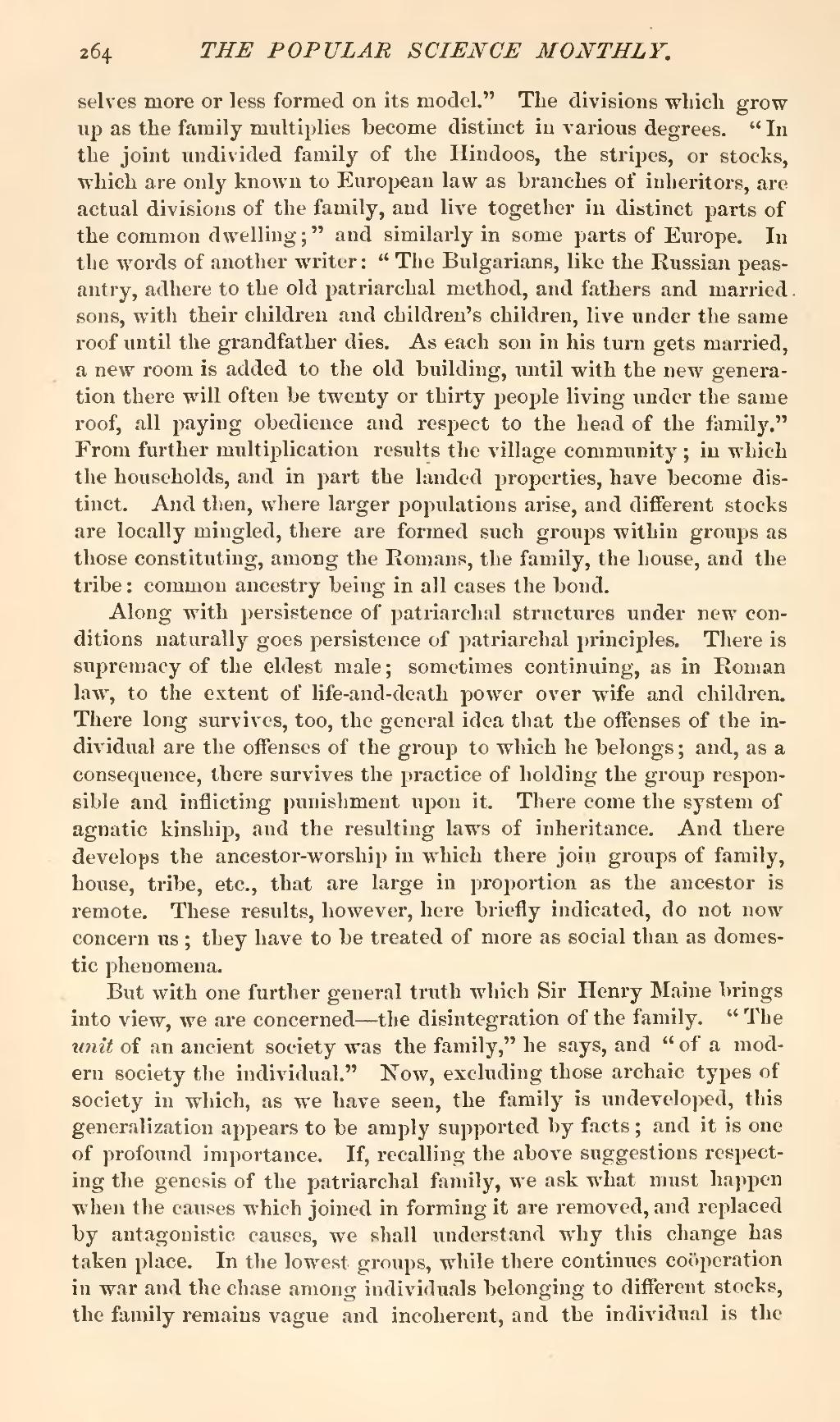selves more or less formed on its model." The divisions which grow up as the family multiplies become distinct in various degrees. "In the joint undivided family of the Hindoos, the stripes, or stocks, which are only known to European law as branches of inheritors, are actual divisions of the family, and live together in distinct parts of the common dwelling;" and similarly in some parts of Europe. In the words of another writer: "The Bulgarians, like the Russian peasantry, adhere to the old patriarchal method, and fathers and married. sons, with their children and children's children, live under the same roof until the grandfather dies. As each son in his turn gets married, a new room is added to the old building, until with the new generation there will often be twenty or thirty people living under the same roof, all paying obedience and respect to the head of the family." From further multiplication results the village community; in which the households, and in part the landed properties, have become distinct. And then, where larger populations arise, and different stocks are locally mingled, there are formed such groups within groups as those constituting, among the Romans, the family, the house, and the tribe: common ancestry being in all cases the bond.
Along with persistence of patriarchal structures under new conditions naturally goes persistence of patriarchal principles. There is supremacy of the eldest male; sometimes continuing, as in Roman law, to the extent of life-and-death power over wife and children. There long survives, too, the general idea that the offenses of the individual are the offenses of the group to which he belongs; and, as a consequence, there survives the practice of holding the group responsible and inflicting punishment upon it. There come the system of agnatic kinship, and the resulting laws of inheritance. And there develops the ancestor-worship in which there join groups of family, house, tribe, etc., that are large in proportion as the ancestor is remote. These results, however, here briefly indicated, do not now concern us; they have to be treated of more as social than as domestic phenomena.
But with one further general truth which Sir Henry Maine brings into view, we are concerned—the disintegration of the family. "The unit of an ancient society was the family," he says, and "of a modern society the individual." Now, excluding those archaic types of society in which, as we have seen, the family is undeveloped, this generalization appears to be amply supported by facts; and it is one of profound importance. If, recalling the above suggestions respecting the genesis of the patriarchal family, we ask what must happen when the causes which joined in forming it are removed, and replaced by antagonistic causes, we shall understand why this change has taken place. In the lowest groups, while there continues coöperation in war and the chase among individuals belonging to different stocks, the family remains vague and incoherent, and the individual is the
